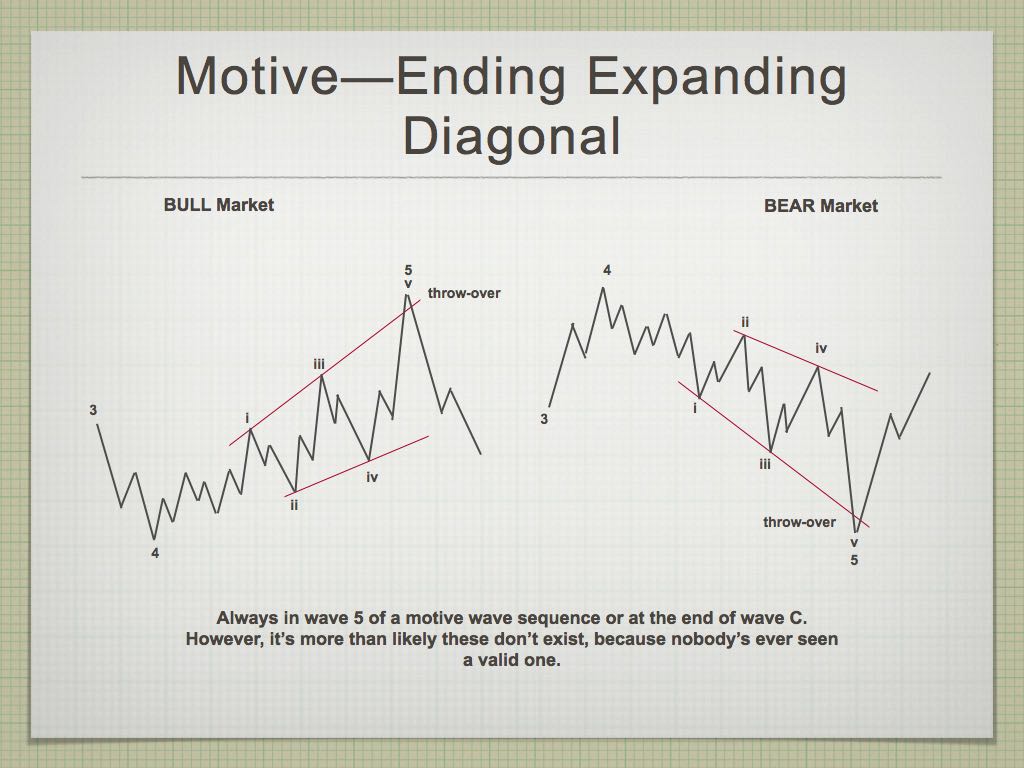Although I’ve only seen two of these, they do exist—they’re extremely rare. This is a Bob Prechter invention, and the example in The Elliott Wave Principle book does not meet the rules of an ending wave. However, they apparently exist, but are extremely rare. [Peter].
Rules (these are “hard” rules; they cannot be broken)
- A diagonal triangle always subdivides into five waves.
- An ending diagonal always appears as wave 5 of an impulse or wave C of a zigzag or flat.
- Waves 1, 2,3, 4 and 5 of an ending diagonal always subdivide into zigzags.
- In the expanding variety, wave 3 is always longer than wave 1, wave 4 is always longer than wave 2, and wave 5 is always longer than wave 3.
- In the expanding variety, wave 5 always ends beyond the end of wave 3.
Guidelines (guidelines can be broken but it’s rare that they are)
- Within an impulse, wave 5 is unlikely to be a diagonal triangle if wave 3 is not extended.
- In the contracting variety, wave 5 usually ends beyond the end of wave 3. (Failure to do so is called a truncation.) [I don’t believe there is such a thing as truncation – Peter]
- In the expanding variety, wave 5 usually ends slightly before reaching a line that connects the ends of waves 1 and 3.




